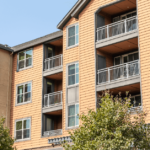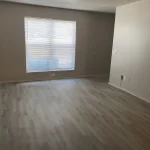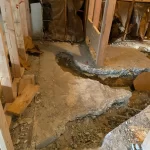The phrase “too little, too late” has never felt more real than when talking about America’s housing market. Across the country, renters and families are facing the harsh truth: affordable housing shortage 2025 is no longer a looming concern—it’s a present crisis. As incomes stagnate, construction costs rise, and populations grow, the gap between supply and demand continues to widen. Cities big and small are struggling with shrinking affordable units, while headlines from California to New York point to a deepening housing supply crisis. From long waiting lists for public housing to families paying far more than they can afford just to keep a roof overhead, the affordable housing shortage of 2025 is defining how millions of people live today.
This blog unpacks the reasons, the risks, and the potential solutions.
The Harsh Reality: Counting the Decline in Affordable Units
It’s no secret that the country is losing affordable housing faster than it’s being built. According to housing advocacy groups, the U.S. has lost hundreds of thousands of low-cost rental homes in the past decade due to gentrification, expiring subsidies, and market pressures.
- Public housing waiting lists often span years.
- Private landlords are raising rents to levels out of reach.
- Subsidized units are not keeping pace with population growth.
The result? A widespread housing supply crisis that affects every community. In states hit hardest, like California, the California housing shortage has become the poster child for the national struggle. With housing demand rising and supply slipping through the cracks, the imbalance grows daily. And this isn’t just about numbers—it’s about the decreasing affordable rentals that families desperately need but can’t find.
What’s Driving the Demand Up? (Income, Population, Inflation)
Behind every statistic lies a simple truth: people need homes, and more people are competing for fewer affordable options. Let’s break down the driving factors:
- Stagnant Wages vs. Rising Costs: While housing prices soar, incomes haven’t kept pace, leaving millions unable to afford even modest apartments.
- Population Growth: More households mean more demand. With immigration and natural population increases, the pool of renters grows daily, fueling the demand for affordable housing.
- Inflation Pressure: Everyday costs—groceries, utilities, transportation—are climbing. Renters already stretched thin have even less to put toward housing.
This combination means that rising housing demand has become the norm, putting unbearable pressure on the system. Families who once scraped by with affordable leases now find themselves priced out, adding fuel to the ongoing renters’ crisis.
Why Supply Can’t Keep Up: Permitting Delays, Costs, Regulations
If demand is soaring, why aren’t we building more homes? The short answer: it’s complicated.
- Permitting Bottlenecks: Cities often take months—or years—to approve new developments. These building delays worsen housing supply shortages in fast-growing regions.
- Construction Costs: Material and labor prices have skyrocketed, making it expensive to deliver truly affordable projects.
- Zoning Restrictions: Outdated regulations prevent multifamily developments in many neighborhoods.
- Community Pushback: Local resistance to affordable housing projects further slows progress.
Developers like Midtown Builders are ready to respond, but when approvals are delayed and costs spiral, the ability to deliver units evaporates. Add in expiring subsidies, and the country sees affordable homes scarcity grow even worse. Without tackling these bottlenecks, the housing supply crisis will remain unsolved.
Real-Life Impact: Families and Communities at Risk
The numbers are staggering, but the personal stories are even more powerful. The affordable housing shortage, 2025 has pushed many families to the edge:
- Parents are working multiple jobs but are still unable to cover rent.
- Seniors are forced into unsafe living conditions after losing subsidized housing.
- Children are bouncing between temporary shelters because of the decreasing affordable rentals.
These aren’t isolated incidents—they’re happening nationwide. Communities face ripple effects, too. Homelessness rises, workforce stability suffers, and social services strain under demand. It’s why addressing the renters crisis is about more than housing—it’s about health, education, and economic resilience.
Testimonials
“My rent doubled in just five years, and I had no choice but to move further from work,” — Angela, Los Angeles
“Affordable housing saved my family from homelessness after a long waiting list, but thousands are still waiting,” — Marcus, Oakland
“We keep hearing about projects, but delays mean we won’t see them for years,” — Lydia, San Diego
Policy Solutions: From Reform to Innovation
The path forward must be a mix of policy reform and innovative strategies. Addressing the affordable housing shortage, 2025 requires both urgency and creativity:
- Streamline Permitting: Cut red tape to reduce building delays and housing supply
- Expand Funding: Increase federal and state subsidies to build and maintain affordable housing.
- Zoning Reform: Allow higher-density housing where it’s currently restricted.
- Incentives for Developers: Provide tax breaks or credits for projects that deliver shrinking affordable units back into the market.
- Innovative Construction: Embrace modular and prefabricated housing to lower costs.
These policies aren’t just ideas—they’re lifelines for millions. And with housing policy urgency mounting, leaders at every level need to act.
How You Can Help: Advocacy, Partnerships, and Action Steps
It’s easy to feel powerless in the face of the affordable housing shortage in 2025, but communities and individuals can make an impact:
- Advocate: Call on local leaders to support reforms.
- Partner: Collaborate with nonprofits and developers committed to affordable housing.
- Support Innovation: Back projects that use sustainable and cost-efficient building models.
- Educate Others: Share resources about the California housing shortage and broader national crisis.
The affordable housing shortage, 2025 is reshaping how millions of Americans live. With housing demand rising, shrinking affordable units, and a worsening renters’ crisis, the need for urgent action has never been clearer. Families are paying the price for affordable homes and the decrease in affordable rentals, while building delays housing supply, keeping new units out of reach. It’s time for leaders, developers, and communities to step up, recognize the housing policy urgency, and push for solutions that match the scale of the challenge.
For insight, partnership opportunities, or to get involved in shaping better housing futures, contact us today.










